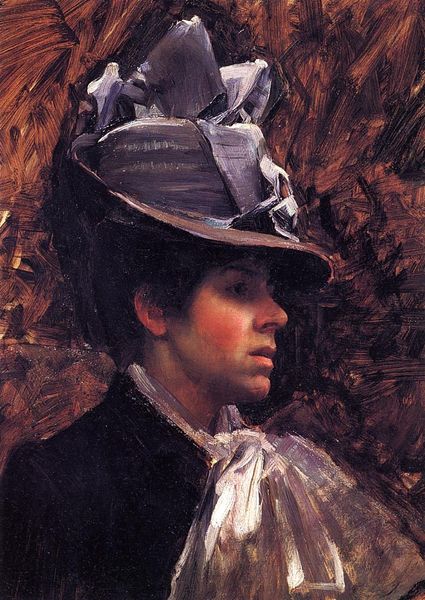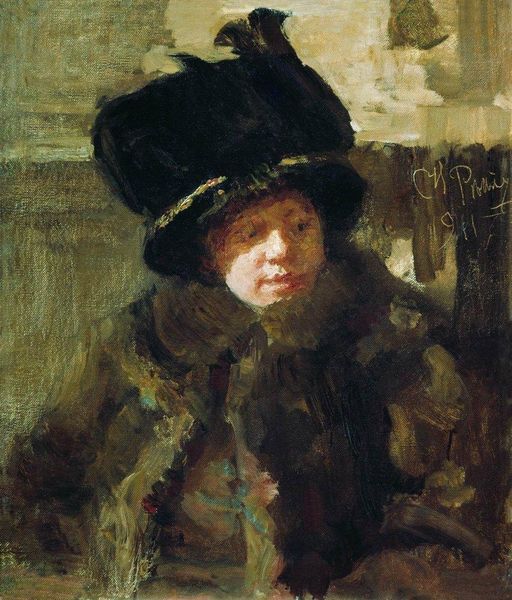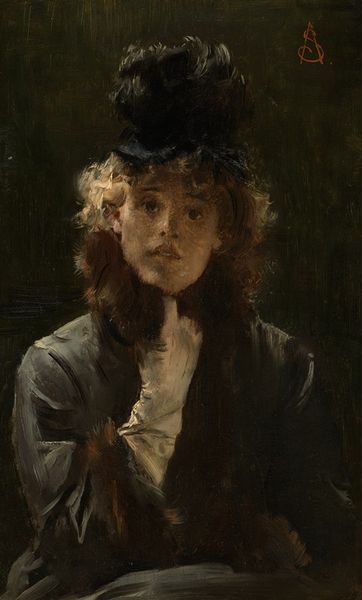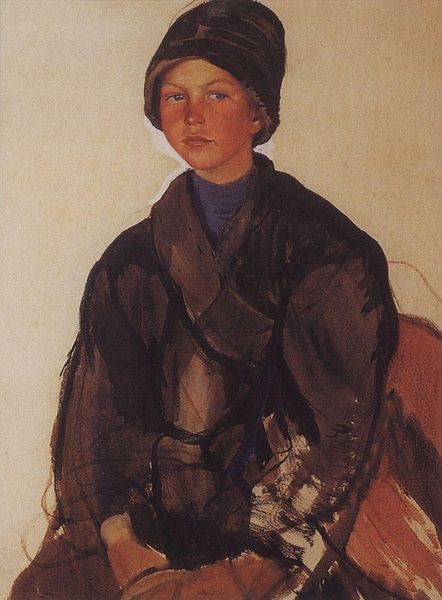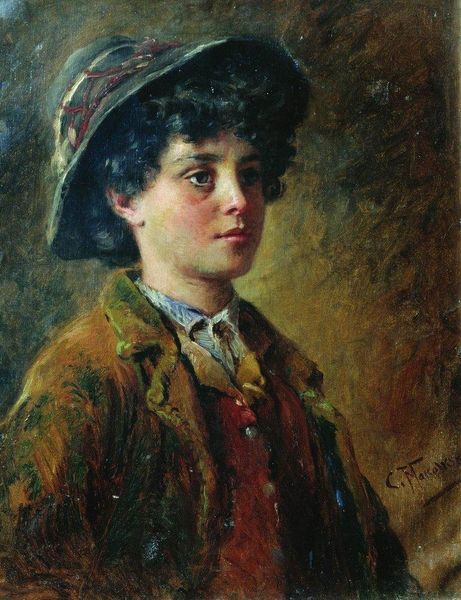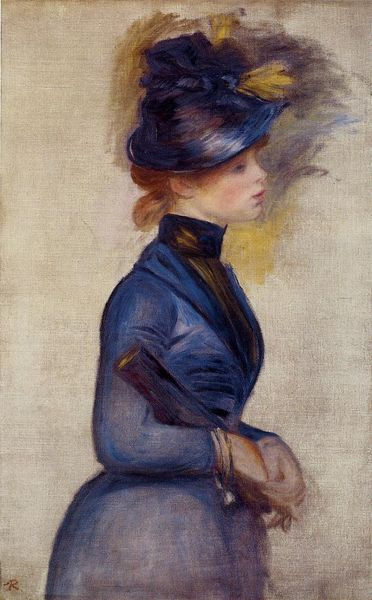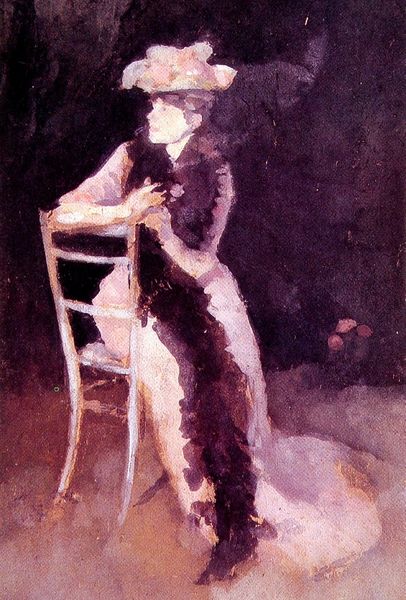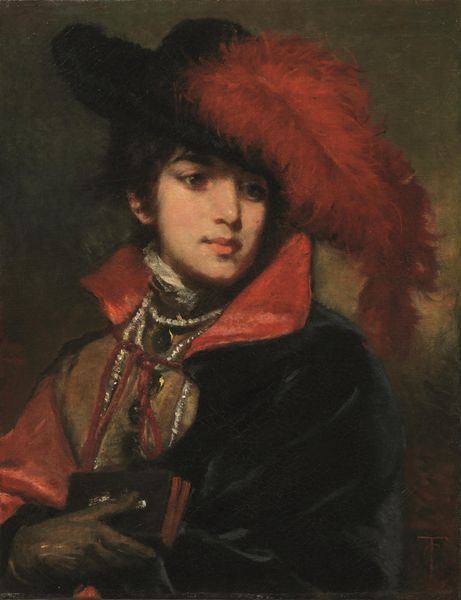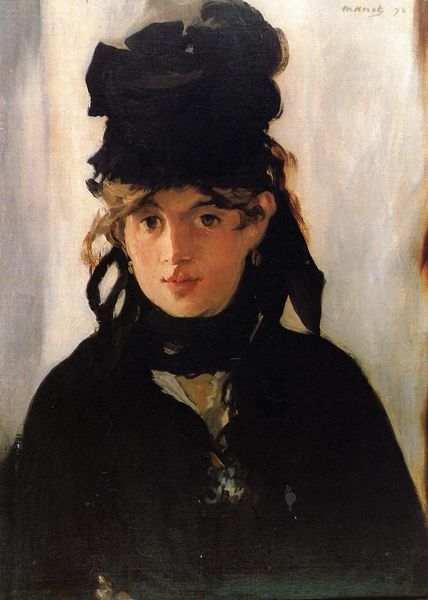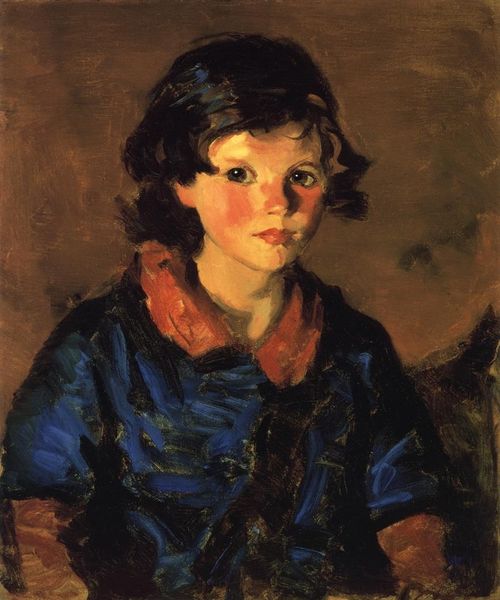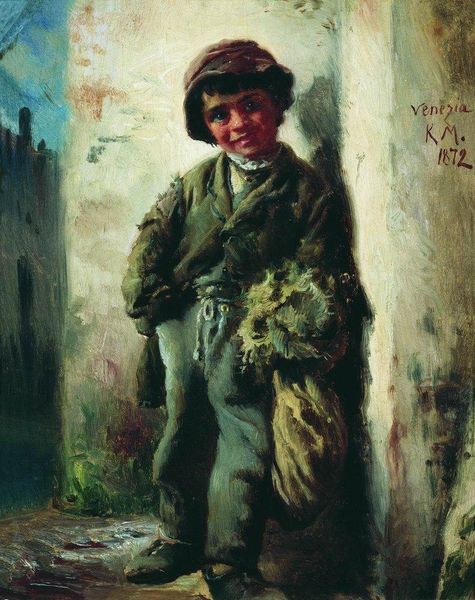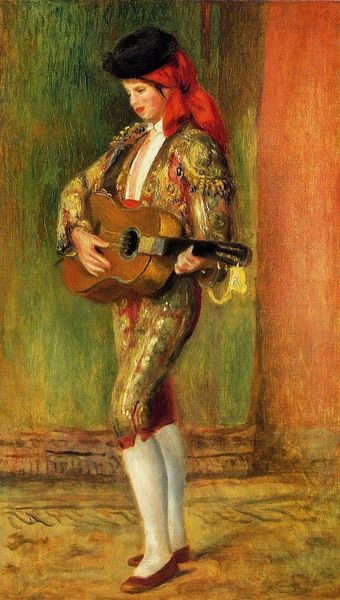
Copyright: Public domain
Curator: William Glackens' "Girl in a Black Cape," painted in 1897 using oil paint, immediately presents a portrait steeped in mystery. It has a certain... gravitas. Editor: Yes, but look closer. The way the impasto strokes build up that dark cape and the girl’s jaunty hat--that's about more than gravity. It's about layering material, dark pigment on a coarsely woven support. Curator: The black cape dominates the canvas. Capes in art historically signify hidden identity, almost like a second skin. What might Glackens be suggesting? Editor: Perhaps just the practicality of early industrial textiles. That heavy cape represents function over form. The girl's holding what appears to be a riding crop—is it purely an affectation, or does she engage with working animals in some way? Curator: Interesting perspective! Consider, though, how light illuminates her face – youthful, confident – juxtaposed against the somber, weighty garment. The bright shirt draws attention. This isn't a simple matter of recording material conditions, but of exploring identity through opposing signs. Editor: Maybe. But look at how roughly the painting is worked—broad strokes, evident brushwork, minimal blending. He doesn't try to conceal his labor. That materiality asserts itself against any overly symbolic reading. Glackens highlights process, how paint becomes an image through the action of his hand. Curator: It's fascinating how the hat is adorned, almost crowning, the girl—perhaps elevating her stature in an aspirational manner. There are so many cultural signals embedded in her style. Editor: True, but the facture of the work itself draws attention to the constructed nature of the scene. These are just representations, produced through deliberate manipulations of matter and artistic labor. Curator: It becomes a study in contrasts then: innocence versus sophistication, lightness versus darkness. The cape as protective covering or imposing barrier. Editor: Precisely! Material choices inform meaning, reminding us art is not passively received but actively created by, and embedded in, material culture. Curator: I appreciate how examining these opposing perspectives allows one to reflect on the multifaceted and often enigmatic qualities that art holds. Editor: Exactly. Seeing that dialectic exposes the artist’s choices, which reveal more than straightforward symbolic intention; they indicate cultural negotiation.
Comments
No comments
Be the first to comment and join the conversation on the ultimate creative platform.

